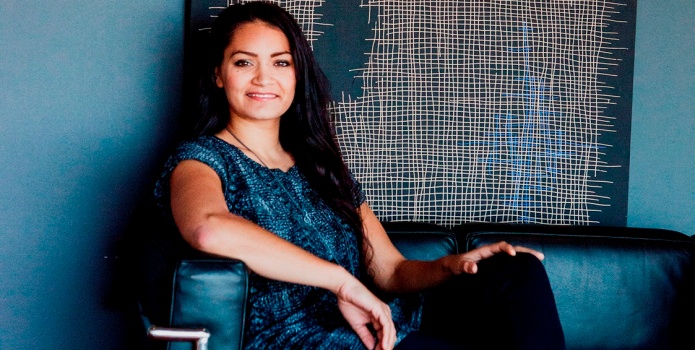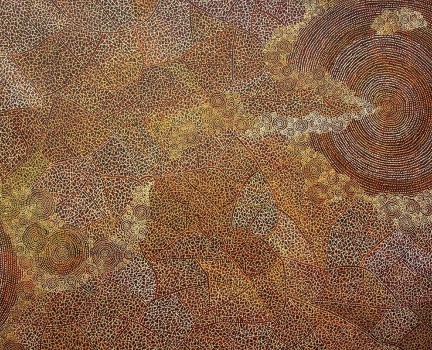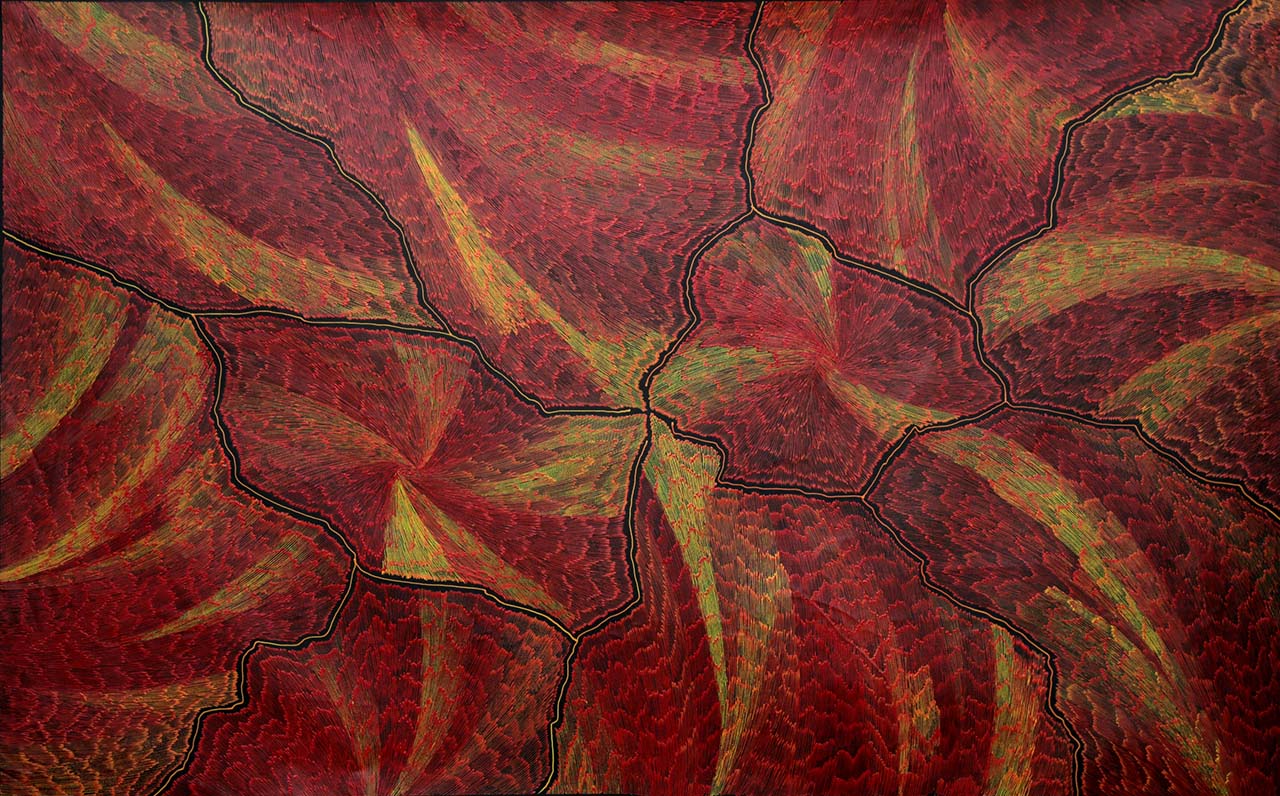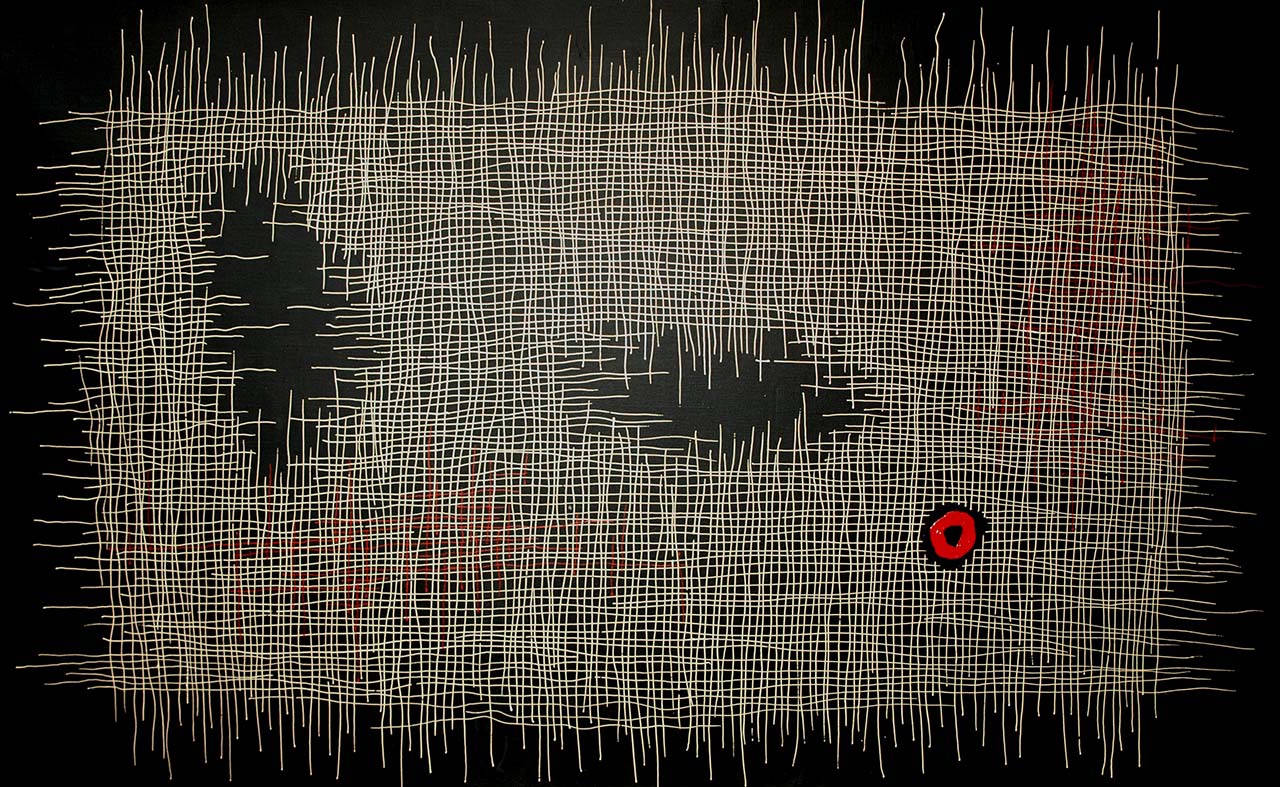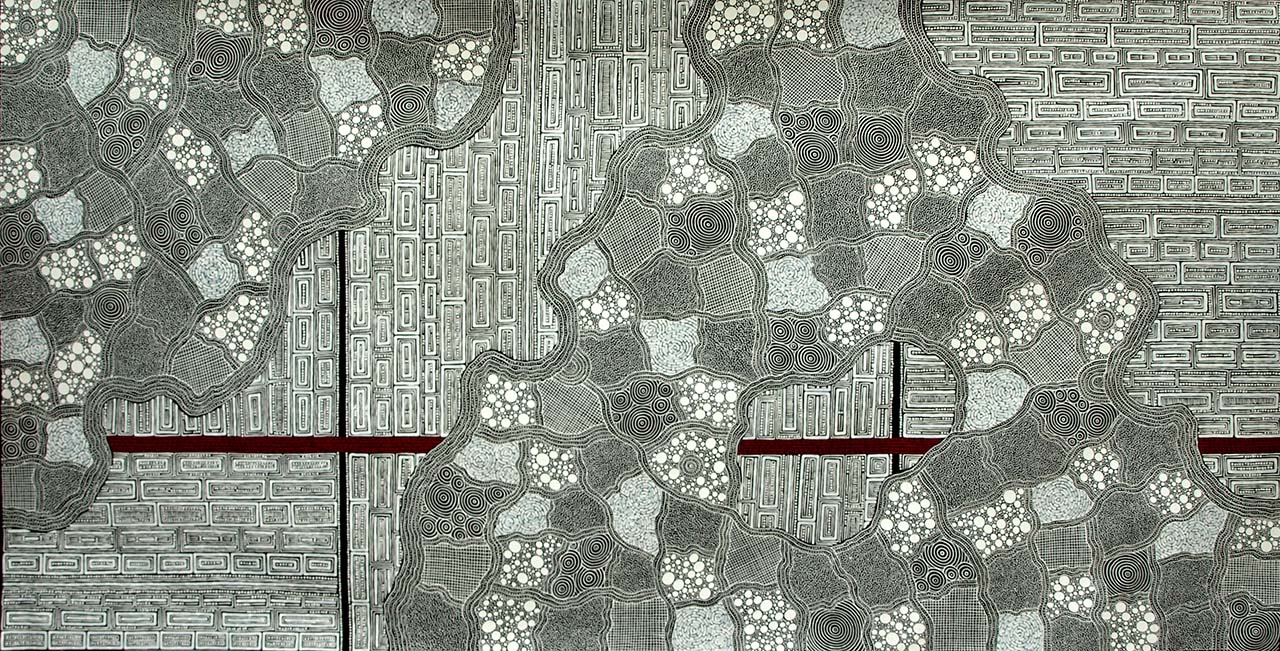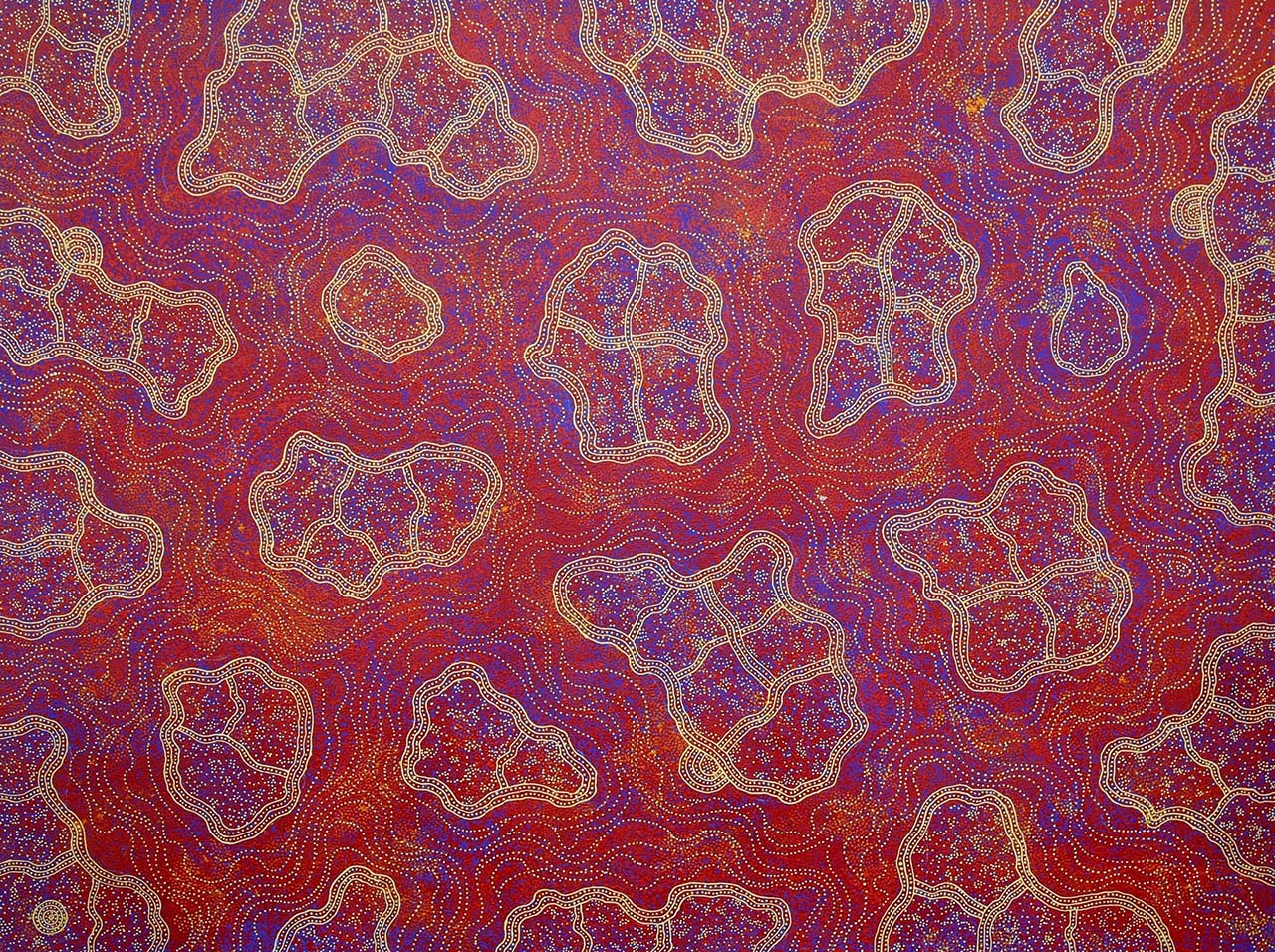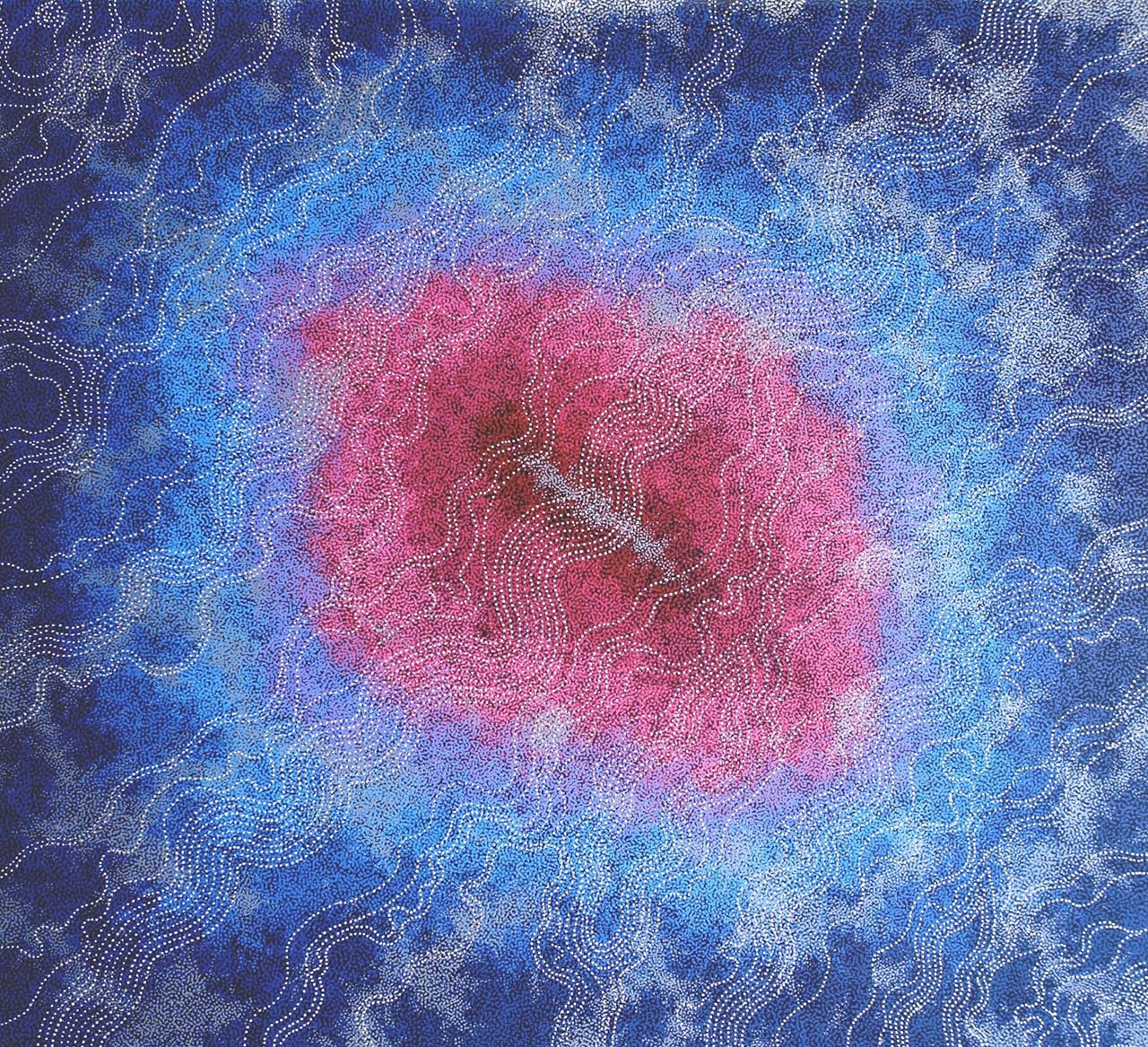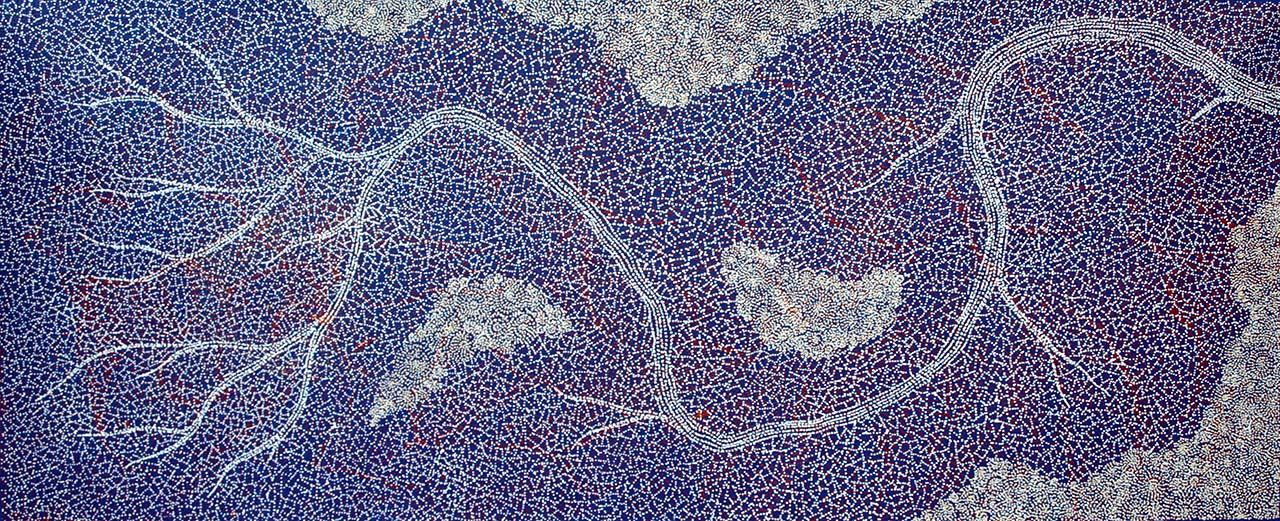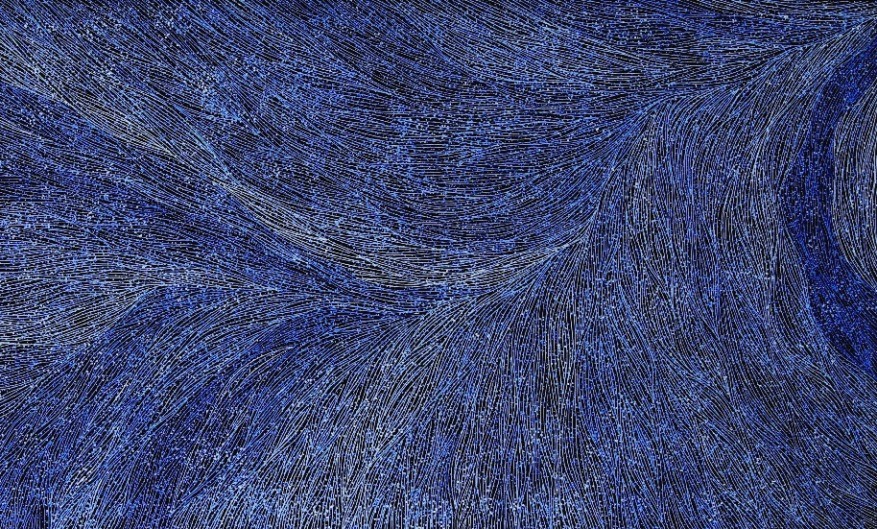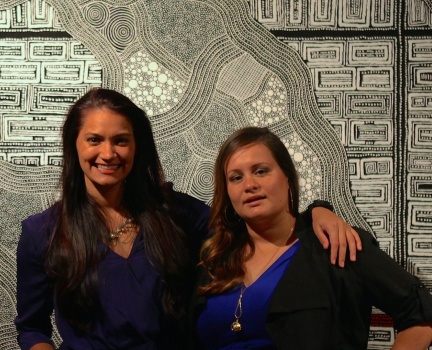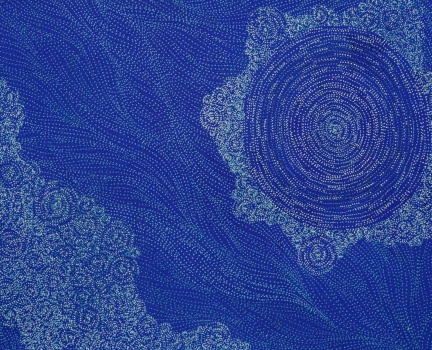Sarrita King – Art, Passion and Story Telling
A rising star in Australia's art world, Aboriginal artist Sarrita King is known for her artworks that connect land, experiences, family and kinship. She collaborates with her sister Tarisse King, and their works are sought after by collectors and galleries in Australia and internationally. Sarrita has Gurindji ancestry from the Northern Territory.
For the opening of her third exhibition at Japingka Gallery, she talks to David Wroth.
Influences
Q: Sarrita, can you tell me some of the major influences that have inspired your art?
The main influence has been my father. I never saw art on the horizon, and then when we moved to Adelaide, Dad had a way of bringing you in, drawing you in. Art was that extension that captured both of us. We loved to talk art, be involved in art when he was around because he was the kind of person who drew you close. It was his passion. When you were around him, basking in it, you couldn't help but be inspired. Even after his passing, both of Tarisse and I still have that connection with him.
Tarisse is another great influence of mine. She's a great person, a great mother, and such a great talent. I love the way she's built on Dad's work and used that influence to take her art further. It does inspire me to see the richness of our culture, it's flowing through her and will go through her children. The culture itself is a major inspiration.
I've been lucky enough to travel and see some amazing artists and their personalities inspire me. Not even sometimes the work, it's just knowing them and knowing their story and being a part of that story and their journey. It makes me more passionate about what I do, just because I can share that with other people.
Some artists don't have the voice. Being able to get out and be that voice makes me really love what I do. Even if I didn't paint, I think I'd go around talking about it forever. These artists are just great people. This was especially true of my Dad. I love to have his story with me. Even now that he's gone, I think that's why I love doing what I do and keeps me doing it.
Q: Who are some of the contemporary artists that interest you at the moment?
I find it hard because a lot of people expect, because I'm in the art world, that I follow great artists or I know all these fashionable artists. But I don't.
I know the people from the bush and I know people that I meet on my travels and they're the people I love to talk about. I love their work, I collect their work because it's personal to me - that's what art is about. I feel bad because I probably should be educated in all these other great artists, but it's the ones that change my life that I'm most interested in and passionate about.
Q: Who are the artists you're collecting?
Kudditji (Kngwarreye) makes up the majority of my collection. I've been lucky enough to sit with him. Every time I talk about him, I have a smile on my face. Every time I look at his art in my home, I smile. I love that experience. I love him as a person and I've only had fleeting experiences. Just the richness of who he is. I got the same feeling from Ronnie (Tjampitjinpa) and Walangkura (Napanangka), just sitting with her and her daughters. It just can't be replaced and I think, with them, it flows from their soul and their stories.
I want to own a part of that because it brings back a great memory for me, too, and it's something I can talk to other people about. When they look at a Kudditji, they will say "Oh, wow!" But I think "No, wow is meeting Kudditji!" His work is an extension of who he is! And it's sad that most people won't get to experience that. The small snippet that I know, I love telling people about.
I love contemporary artists and I've been lucky enough to meet glass artists from Melbourne like Tegan Hamilton and another contemporary artist from Sydney, her name is Sally Gibson, and she's like a third mother to me. I like to see a woman in her second life. The work she does, and the way she does it, and the fact that it works around this amazing lifestyle that she's got, and I get to see the inner workings of it. That's what I love about art, about artists.
I know I should have a broader knowledge. But for me, it's the ones closest that influence me, my style, and my lifestyle, and leave a footprint on what I do.
Passion
Q: You've taught and mentored young artists. What do young artists need most in order to thrive?
A lot of people would probably say social media. But I think it's passion. When I meet people it's the ones that engage with me the most, on this kind of level we're having now, and have those interesting stories. It's not about what their art is, per se, it's the feeling behind it. I'm lucky enough to be able to do it as a career. Most people work long, hard jobs and then they have this great side-passion and maybe it'll never be their career. Just being able to show people that it is possible, lights a fire in them that they think, "Maybe I can do it, too!"
It's desire and putting a story into your artwork. I feel lucky because my Dad gave us so many great stories. Every painting has an emotion; a moment in time put into it. If people express that, let the viewer know that moment and share something, then the person who views an artwork might be able to connect with that as well. It makes that painting even better. For the person painting it, it's a great moment in time that they can never be able to get back. But they've got a great expression of it.
And being happy and passionate is what is needed.
Paris
Q: You've travelled abroad to paint an exhibit in Paris. What was that experience like?
It was great! Travelling is part of sharing the story. The French language was a bit of a barrier, but my goal is to get on top of that. I have a lot of family over there, from my European heritage. It was lovely to be able to connect and see a rich culture, so different to ours, actually embrace ours.
It was quite mind-blowing, painting and being down the hall from Dali's and Picasso's. I look back and go, "Oh, my goodness!" I want people to see my work and I want people to be able to engage. Whether it's down the street from where I live or in Paris, the people are the same, sharing is the same. I prefer Australia, although I don't like the big cities and too much bread. Travelling was a good experience and I hope to do more and be a bit of an ambassador for not only the culture but for the art, it's really exciting!
Collaboration
Q: You and your sister, Tarisse, sometimes collaborate. What do you enjoy about this way of working and how is it different from working on your own?
We cherish collaborating more now than we ever used to because we do live such separate lives. She's now based in New Zealand and has two little girls. We're on these two different paths, but when we collaborate together on an artwork, it's like we never left the same studio. That feeling of closeness is special, we're very close in age and always been good friends. To be living such separate lives is actually really hard for us. To be able to connect through art, and even more so through collaborating on artwork, it's really lucky to be able to keep that connection.
Tarisse is really the only person I could really share a studio with, as well. As much as I love to work in front of people, when I'm in my studio I love my own time. She's the only person I've ever shared with that I could easily do it with forever. Working together just feels natural.
The 2014 Japingka Exhibition
Q: Can you tell me about the works in this particular exhibition? Are there themes that are coming out for you in this work?
The Japingka shows are always really great. This is our third one now and it seems to be this big compilation of all of our great innovations over the last eighteen months. We try to push the boundaries and show people things they haven't seen from us. So, the same people could come to an exhibition every eighteen months, or every couple of years, and see new works. They could see our own evolution. The body of works here is a reflection of the work we've been doing over the last couple of years and trying to bring a fresh look to the West Coast.
It's also about the feel of the gallery. This is our third show, and we've become friends. It's about sharing. You walk in to see these paintings. These have been sent across here for months and you walk in and you just know. you just feel comfortable. You feel like these guys know the work and they're going to do it justice and you just feel at home. I love coming here. The high ceilings, the feeling that comes from the great people that work here. The space, and the great memories we've already shared. Having an on-going relationship makes it better.
Q: Is there a particular painting in this exhibition that you're particularly fond of that has a story that is important to you.
I must say for Tarisse's works, some of them have blown me away, in particular, "The Land".
She has stepped out of her comfort zone here, and I know that she's happy - I think it feels like a triumph for the whole show.
Salt Lakes
I love the whole Salt Lake series, but this one - Salt Lakes - just caps it off, because it's that beautiful mix of the blue and the pink.
Tarisse uses Dad's technique which is the layering of the dots. Dad never used to do a Salts. He used to do the fires and the waters, the earth images. This is the first one that Tarisse stepped out of his influence, using his techniques, but now it’s her own story.
For us, when we grew up, we ... My Dad was in Adelaide and my Mum was in the Territory, so, we used to drive a lot because it's a big family and flights, back then, were very expensive. For us, when we used to hit the salt pans, we knew we were close and we knew we were almost home. That's the feeling I get when I think about that story. It's great that she just paid homage to Dad, because we were coming home.
I think she's brilliant, and she still takes my breath away.
Colour
Q: Tell us a little bit about how you arrive at the palette for a painting.
Inspiration in colour comes from the land, what we see reflected in front of us. The Utopia artists and the Western Desert artists have shown us that colours aren't obvious to the casual observer. If you look closely at the desert, you'll see the tiny purples and all the colours, it's one of the most colourful places with the most beautiful landscape.
The colours are always a reflection of nature, it’s an energy that we're trying to capture. The water has such beautiful tones of blues, it's a calming thing for people. A hue can change the energy of an artwork. The diversity of the colour ranges matters, you might see two waters side by side and the flow or the highlights of the different blues just changes the whole imagery.
That's what people are drawn to, instinctively. Dad always said, "Do what you want." He was that person that really broke the mould of indigenous art. People would say "This isn't indigenous art, this isn't ochres, what are you doing here?" And he was like, "You don't know indigenous art, then."
When Tarisse brought out the pink salts, she just assumed ' This isn't going to go down well." She used those colours to express one of the greatest memories for us. And people just love the pink salts.
Our spirits and our eyes are drawn to beautiful colour. It is one of the greatest things about being able to create artwork, to work with them and give them a great energy and flow. Sometimes, it doesn't work, but, when it does it's great. It's experimentation and it's standing back, and at the end being surprised.
Authenticity
There are times when I've done an artwork and I've gone, "Ooh, that hasn't worked." It's hanging on a gallery wall and I'll walk in and go, "Oh?" And someone will walk up and go "Oh my!" It takes their breath away and they love it. Just because it doesn't sit well with me, doesn't mean that it won't be perfect for someone else. That's the weirdest learning curve I've ever had.
You can overthink things. Or you can put your artwork out there.
Authenticity has a beauty about it. I think about Kudditji working. Or Walangkura working during some of her last days, there were drips of paint across the canvas. No one said, "Oh, the paint is too runny!" Everyone knew "That is a reflection of who she is. She's an old lady." Same with Kudditji. Let them push that paint. Keep it dripping like that. If Walangkura's artwork at that time didn't have drips over it, then it wouldn't be a reflection of her. It's not the power she wielded through the canvas, it's the power she wielded through her family. She's that matriarch, that core, that essence of the whole room. It's her and it's actually reflected in the way that the paint drops.
It's a raw beauty. You say with your art, an unabashed "This is who I am. You take it."
Stories
Q: Your artwork is both mainstream contemporary art and Aboriginal art. Do you see a day when Aboriginal art is no longer a separate category?
The thing that sets it apart is the story. I don't think that the story will ever leave Aboriginal art.
When you walk into an Aboriginal art gallery, it's like you're walking into a book. You're walking into knowledge, into a beautiful picture book where every image you see has a soul. It has a meaning, an intention behind it. That's only the artist's intention, it's not what the viewer puts into it.
Aboriginal art is nature-based. People feel very akin to it - it speaks to some memory or some great interaction. It's always something that the viewer is wanting or has had. It's a great connection for them.
A lot of mainstream art probably has that story, but they don't express it in the same way. In that way, I think that contemporary art ... has kind of fallen below ... Aboriginal art has that over contemporary art every time. Almost every Aboriginal artwork could hang next to a contemporary artwork - they would be akin, but there would be this difference in the story behind them.
Contemporary art could come towards aboriginal art more, towards higher meaning - it could aim to share stories. For Dad, it was all about the story. For us, it's all about the story and the connection. If you want to display something in your home, in your office, you want to connect, to share, to give. An aboriginal artwork with a story gives back to you.
People put their own story into every artwork. Even contemporary art that might be untitled, it gives them an emotion. When an artwork reverberates, speaks back to you, this is a very special connection.
I don't think Aboriginal art needs to join mainstream art. Because what we've already got is so special.

